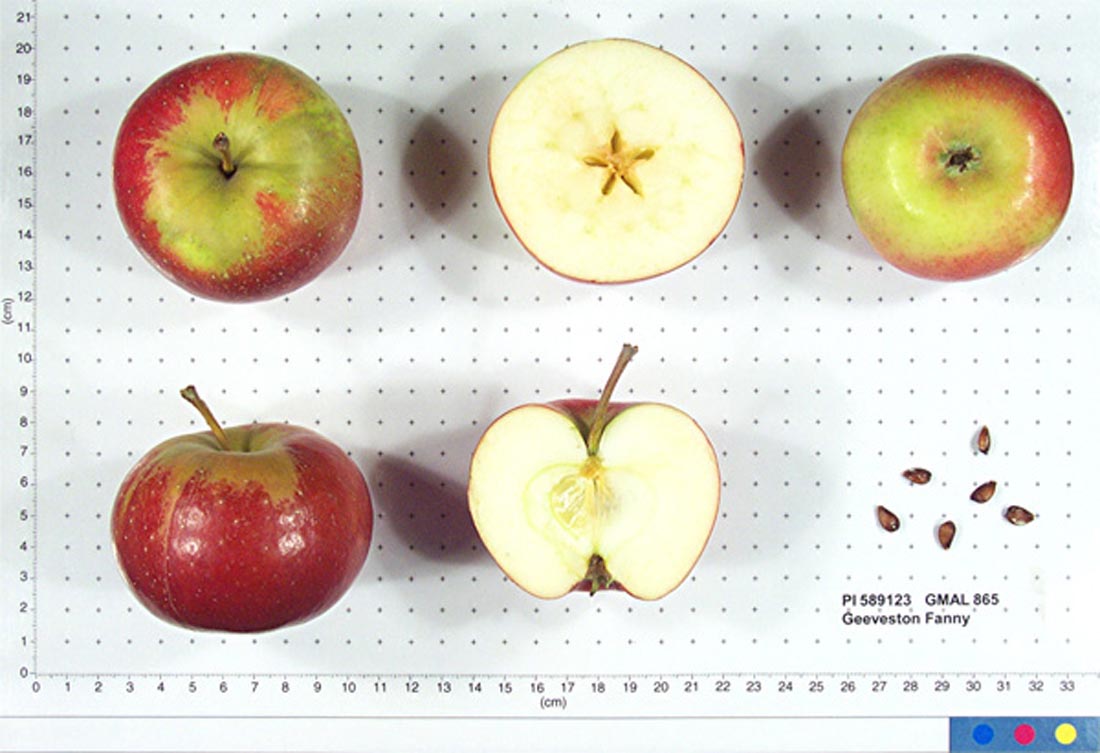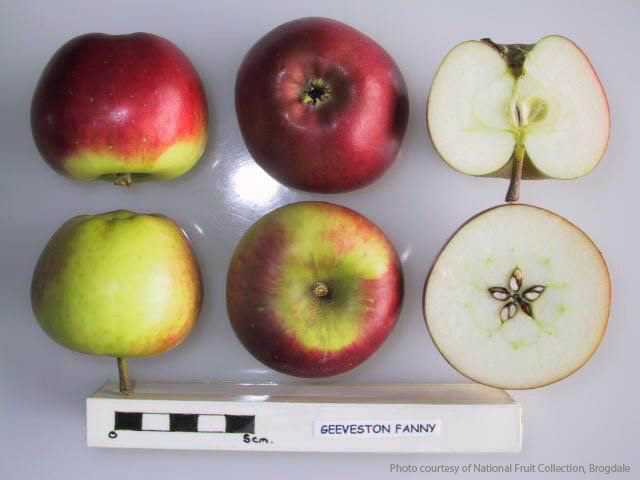Pomiferous
Welcome to the world's most extensive apples (pommes) database.
Information on over 7,000 apples is available here, all carefully researched and provided in a way that is easy to navigate.
Geeveston Fanny
type: Culinary, Dessert, Pie
synonyms: Susan's Pride
summary: A good eating apple from Australia, also makes excellent apple pies.
identification: Small tending to medium size. The skin colour is pale yellow, over which is a bright red wash that covers most of the surface, showing through only on the shaded surfaces. Darker red stripes are sparsely scattered across the face. Red blush and stripes on the sun exposed face. The stem is short and stout, set in a deep and funnel shaped, russeted cavity.
characteristics: The flesh is white, crisp. Sweet and aromatic.
origins: Raised in Geeveston in Huon Valley, Tasmania (Australia) in the 1880s. Apparently the original tree was one of six whips imported by a storekeeper in Shipwright's Point near Huonville, Tasmania (Australia) and sold to James Evans who planted them in his 18-acre orchard Fernery in 1870. All six thrived, but one of them stood out an was named Susan's Pride for his wife. In 1908, he sold some scions from this tree to William Ebenezer Ashlin who renamed the variety in honour of his own wife, Fanny (née Geeves), and devoted four acres of his orchard to the variety. The gamble paid off. Though Geeveston Fanny is not often encountered today, it was a popular commercial apple right through to the 1970s when more modern supermarket varieties pushed them into the background.
cultivation: Moderately vigorous. Bears annually and produces heavy crops, to the point where it requires thinning at fruit set to achieve adequate fruit size.
mutations: Geeveston Fanny Red, Red Geeveston Fanny
cold storage: Keeps up to two months in torage.
vulnerabilities: High resistance to scab.
harvest: Ready for harvest during the last week of the fourth period.
pollination group: C
pollination peak: 9
ploidism: Diploid. Self-sterile.
cold storage weeks: 8
harvest period: 4
Donate a cider?
©2016-2021 Pomiferous.com. All rights reserved

